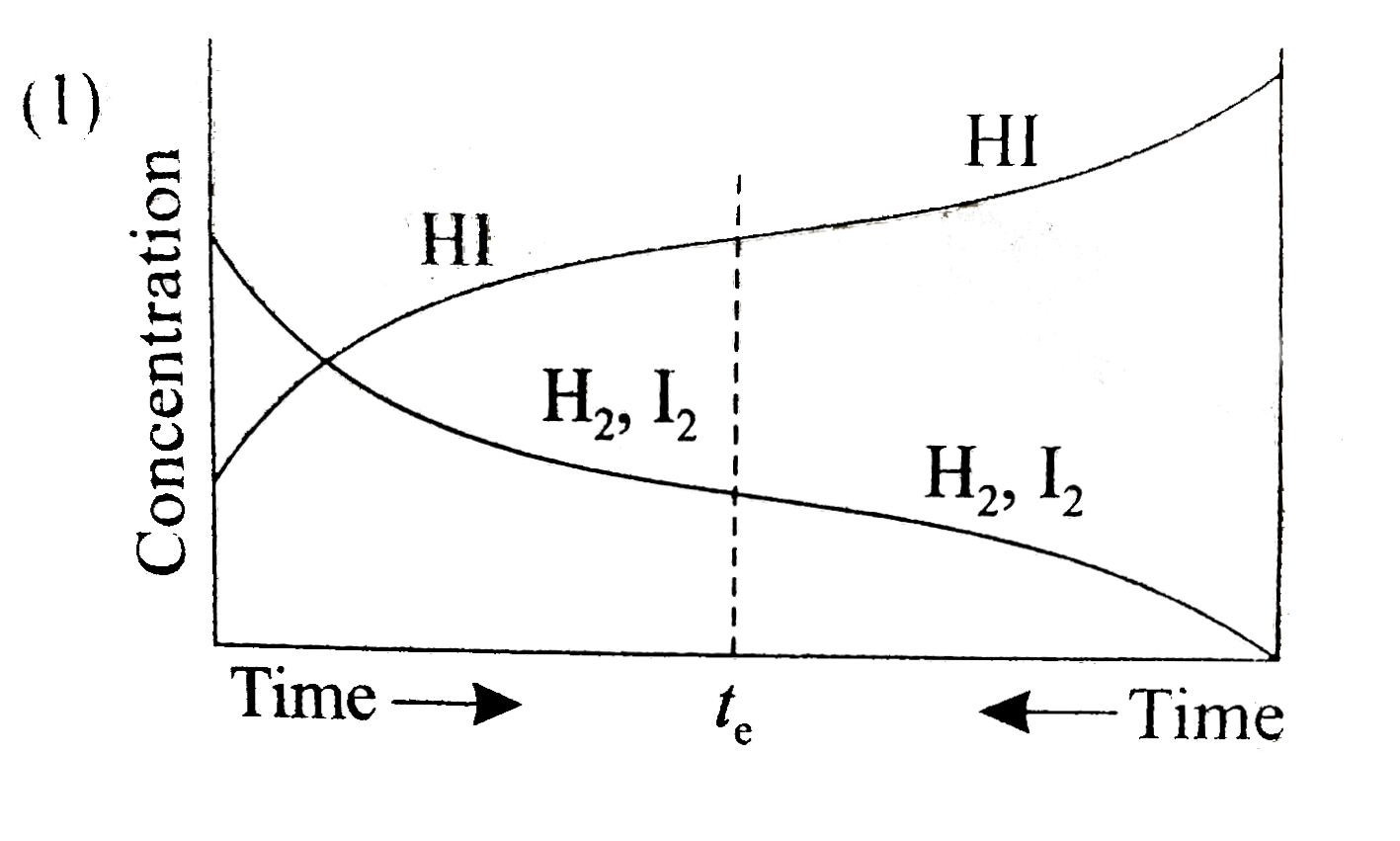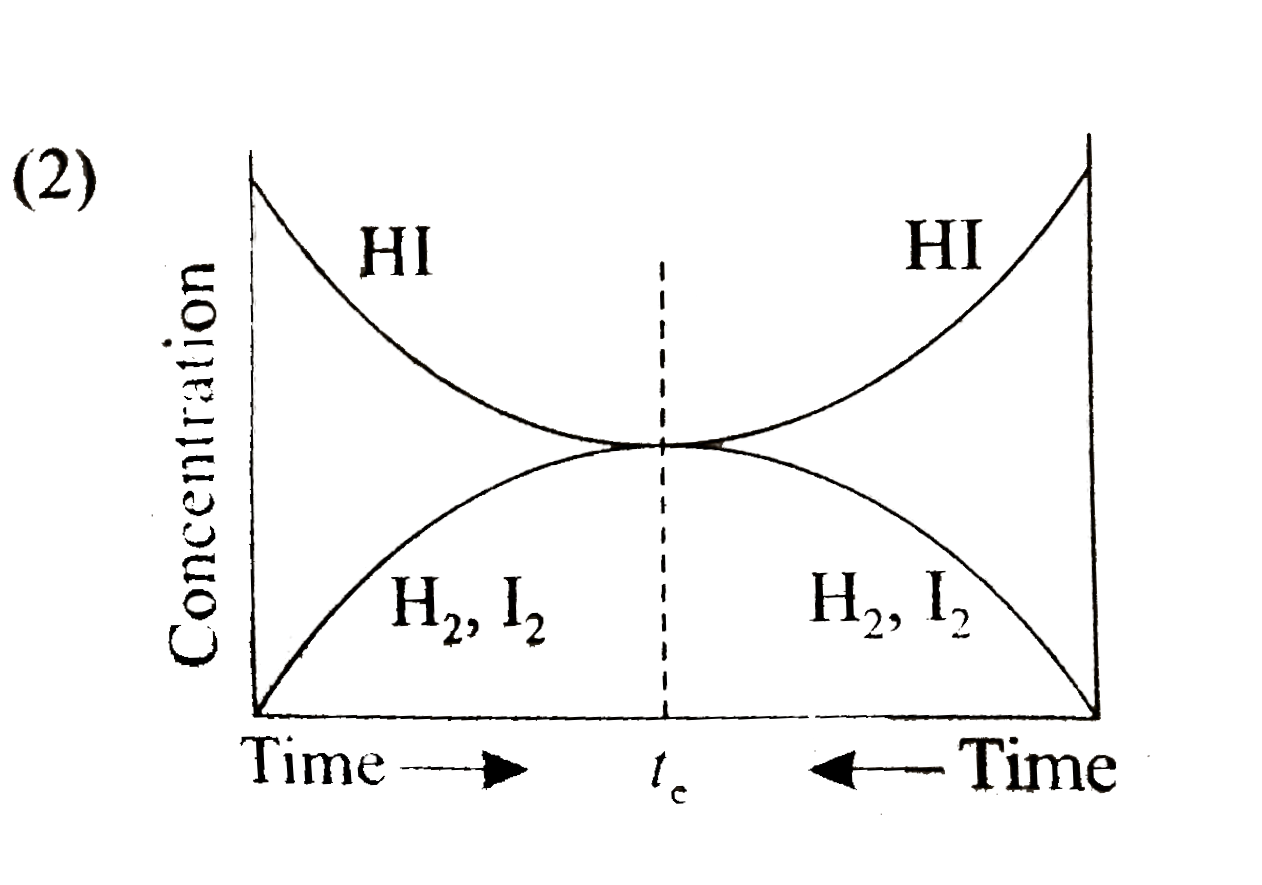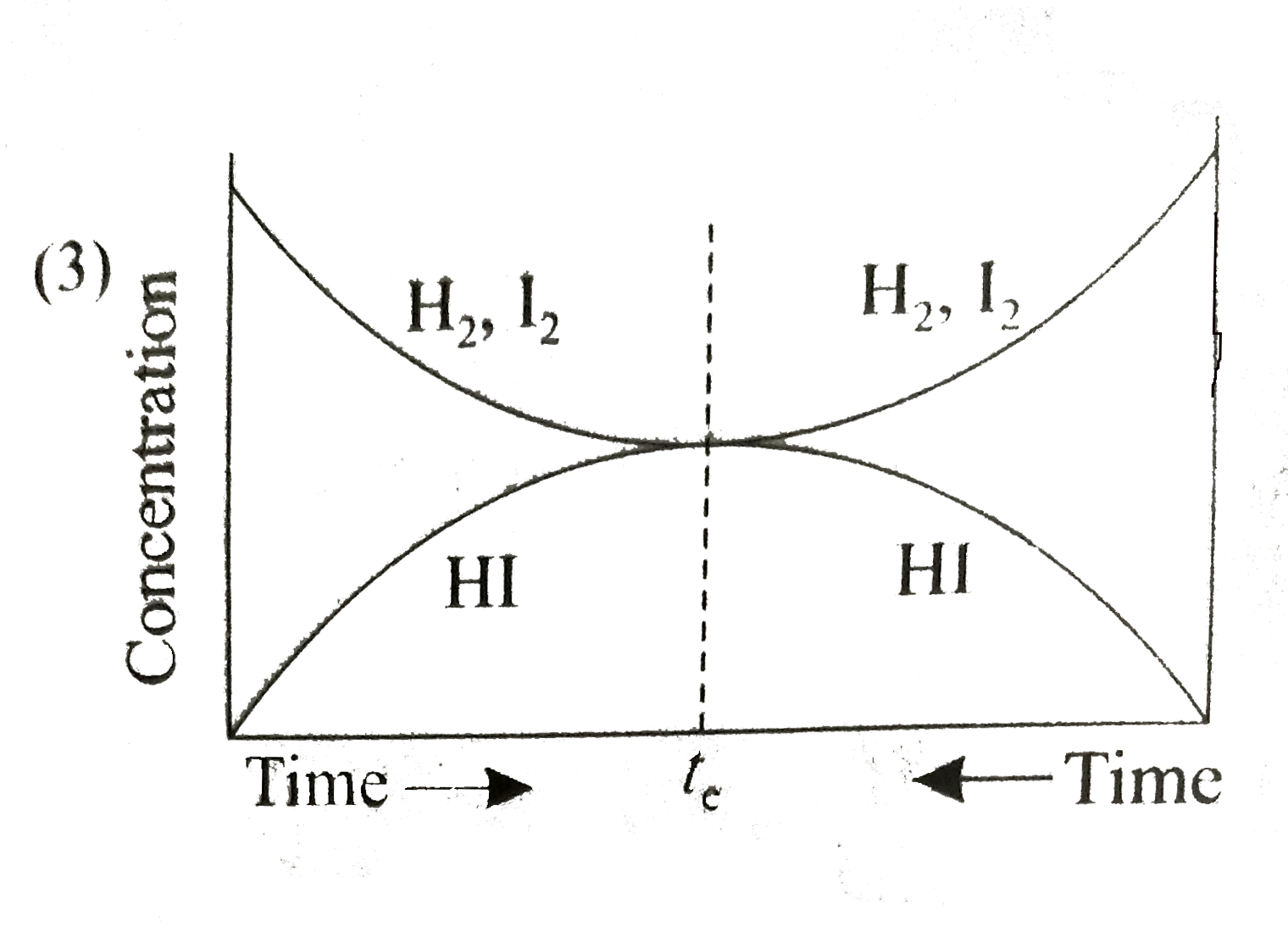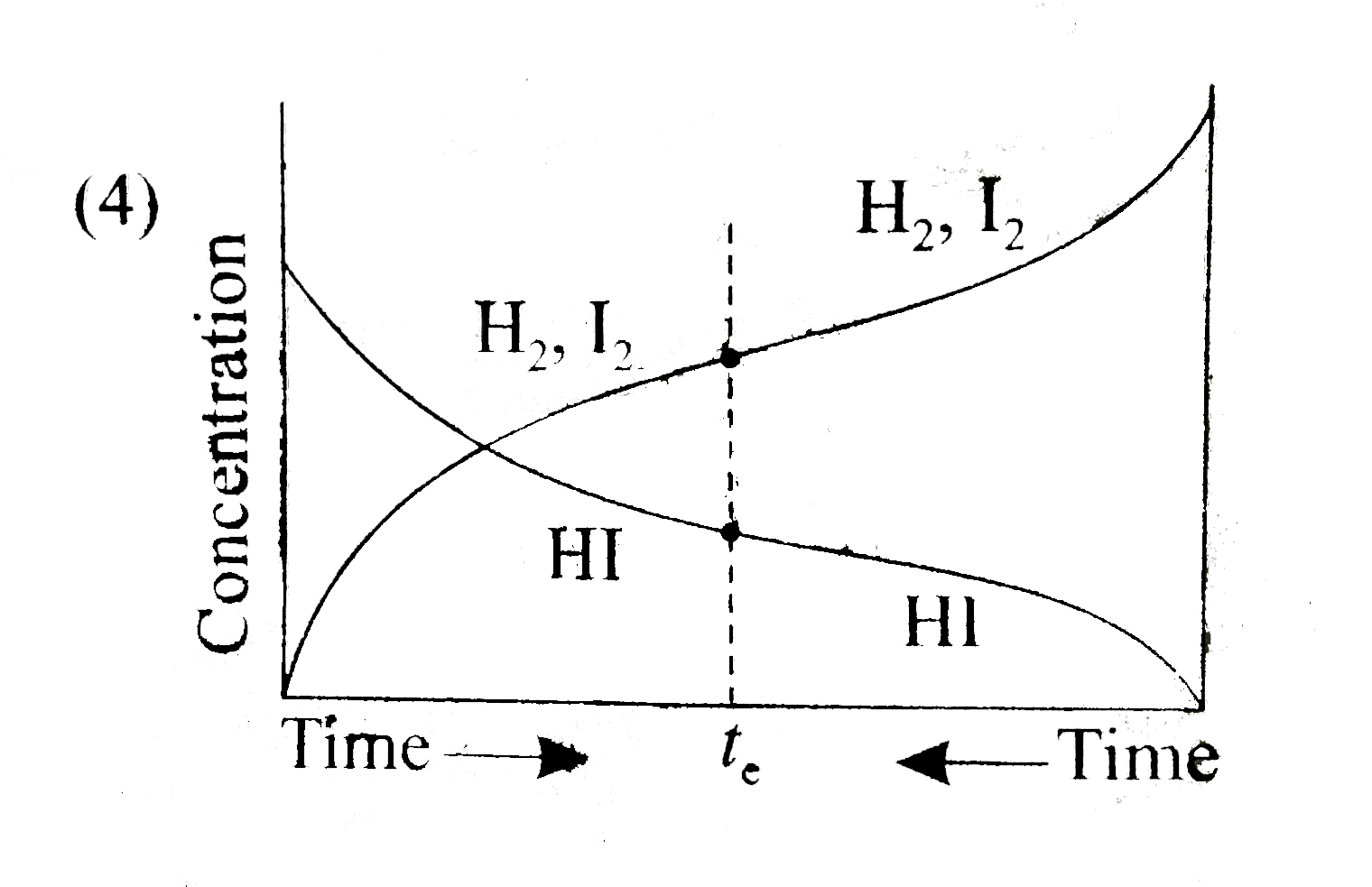Which of the following correctly depicts the fact that identical chemical equilibrium can be attained through reversible reaction from either direction?
A

B

C

D

Text Solution
The correct Answer is:A
If of and of are taken in bulb at and of are taken in an identical bulb at , the intensity of colour in I decreases due to the consumption of while the intensity of colour in II increases due to the formation of . Ultimately, both have the same intensity of color. In all these graphs, is the time at which equilibrium is attained.
|
Updated on:21/07/2023
Topper's Solved these Questions
- BOOK - R SHARMACHAPTER - EQUILIBRIUMEXERCISE - Follow-up Test 313videos
EQUILIBRIUM
- BOOK - R SHARMACHAPTER - EQUILIBRIUMEXERCISE - Follow-up Test 410videos
EQUILIBRIUM
- BOOK - R SHARMACHAPTER - EQUILIBRIUMEXERCISE - Follow-up Test 110videos
EQUILIBRIUM
- BOOK - R SHARMACHAPTER - CLASSIFICATION OF ELEMENTS AND PERIODICITY IN ELEMENTSEXERCISE - ARCHIVES37videos
CLASSIFICATION OF ELEMENTS AND PERIODICITY IN ELEMENTS
- BOOK - R SHARMACHAPTER - GENERAL ORGANIC CHEMISTRYEXERCISE - Archives36videos
GENERAL ORGANIC CHEMISTRY
Similar Questions
Knowledge Check
- Question 1 - Select One
Unit of equilibrium constant for the reversible reaction H2+I2⇔2HI is
Amol−1 litreBmol−2 litreCmol litre−1DNone of these - Question 2 - Select One
Which of the following factors will favour the reverse reaction in a chemical equilibrium?
Aincrease in concentration of one of the reactantsBincrease in concentration of one of the productsCremoval of one of the products regularlyDNone of these - Question 3 - Select One
Unit of equilibrium constant for the reversible reaction H2+I2⇔2HI is
Amol−1 litreBmol−2 litreCmol litre−1DNone of these
The equilibrium state can be attained from both sides of the chemical reaction.
View SolutionThe equilibrium state can be attained from both sides of the chemical reaction.
View SolutionWhich of the following does not influence the chemical equilibrium of a reversible reaction?
View SolutionWhich of the following favours the reverse reaction in chemical equilibrium ?
View SolutionWhich of the following correctly depicts the attainment of equilibrium for the reaction:
N2(g)+3H2(g)⇔2NH3(g)
beginning with stoichiometric amounts of N2(g) and H2(g) and no NH3(g).View Solution

